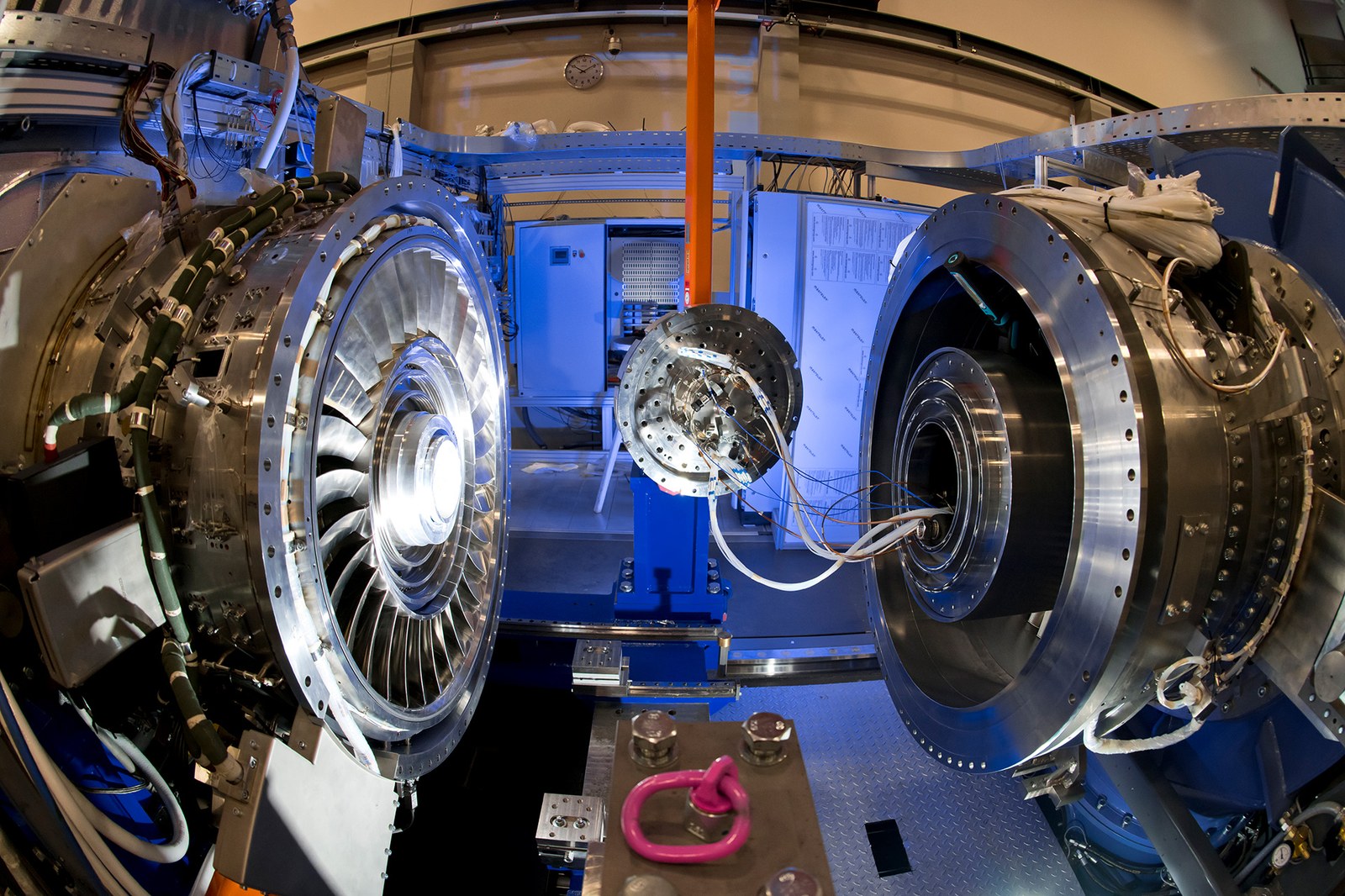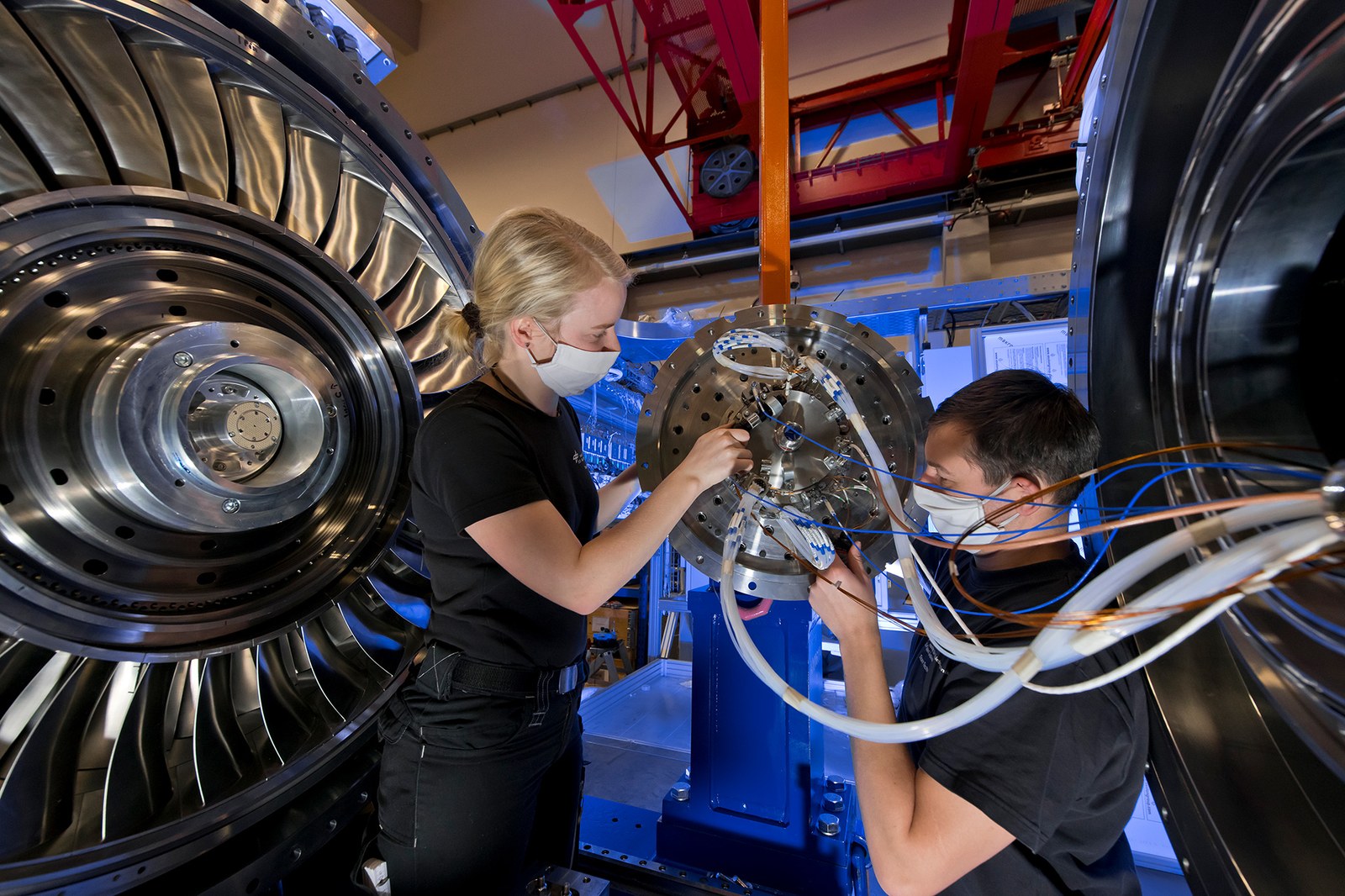DLR and Siemens conduct research into turbines for the energy transition


- Together with Siemens Energy, DLR is researching the next generation of turbines for gas-fired power plants.
- Gas-fired power plants will play an important role in the implementation of the energy transition – particularly as a reserve and to cover peak loads.
- Important aspects are reliable operation at partial load and the use of alternative fuels.
- DLR has a unique test stand infrastructure and comprehensive expertise for testing gas turbines.
- Focus: Aeronautics, energy, digitalisation, hydrogen
Large turbines in gas-fired power plants are some of the most effective machines for reliable energy supply. As this technology is set to continue to play a central role in the energy transition, the German Aerospace Center (Deutsches Zentrum für Luft- und Raumfahrt; DLR) is working with Siemens Energy to develop the next generation of turbines.
Reliable and efficient operation at partial load and flexible use of fuels
There is a dual focus to these efforts, with both parts closely connected to the sustainable reconfiguration of the energy system. Firstly, how can power plant turbines operate as safely and efficiently as possible, even with a partial load? In the near future, gas-fired power plants will increasingly serve as a reserve, as they can be started up quickly. This allows short-term failures in electricity production from renewable resources to be absorbed and peak loads to be covered reliably. Gas-fired power plants thus contribute towards secure and stable power supply in an energy system based on an ever-increasing proportion of renewable but fluctuating solar and wind energy sources. Secondly, how do gas turbines behave if alternative fuels are used instead of natural gas? These include biogas, synthetic gas or hydrogen as an admixture of almost 100 percent.
Unique test turbine meets high-tech DLR test stand
Put simply, gas turbines use the internal energy of a hot mixture of gases to drive rotor blades. These drive a generator that produces electricity. Since 2016, the DLR Institute of Propulsion Technology has been working with Siemens Energy to develop a unique test turbine. This was delivered to DLR’s Göttingen site in November 2020 and successfully integrated into a specially constructed test stand by a team from the Turbine Department.
The turbine is about half the size of those used in power plants and weighs 12 tonnes. DLR is one of the few institutions in the world with the ability to conduct tests at this scale under realistic conditions, as it has the necessary test stand infrastructure and expertise. It is vital for the hot flow of gas inside the turbine to reach transonic velocities of approximately Mach one. This is the only means of ensuring that important technical parameters can be reproduced in a comparable way. In addition to achieving the correct high velocities, temperature conditions are also important. If they are not correct, the cooling effects on the blades will not be meaningfully replicated.
The test turbine has around 1000 measurement points over a length of approximately 1.5 metres. Compressed air measurement sensors, stationary pressure transmitters and optical measurement processes are all used. The latter make it possible to observe the flow inside the turbine without interfering with it, using special lasers. The measured data give an insight into the temperatures and pressure at specific points, how the gas flows behave and the condition of the blades. The metrological investigations also focus on determining the efficiency and flow losses, and analysis of heat build-up and cooling processes.
Pushing the boundaries – minimal cooling increases efficiency
DLR researchers are particularly interested in the distribution of cooling air across the turbine blades and how this process might be optimised. “The more cooling air we need in the turbine, the lower its efficiency,” explains Project Manager Philipp Weggler. “This is why we want to use cooling air as sparingly as possible. The blades must not overheat, especially during partial load operation. Otherwise, they will wear out faster and have to be replaced earlier, requiring costly repairs.” With that in mind, the team is pushing the technology to its very limits in testing. They are exploring where these limits lie during full load operation, while also investigating the lowest partial load operation, at around 20 percent of full load. At this operating point, all components in the power plant normally remain at the required temperature for the turbine to be ramped up again flexibly and quickly.
Vortices and turbulence – how do hot gas flows behave inside turbines?
The researchers also want to find out how the individual stages of the rotor behave in relation to one another. The test turbine has a 2.5-stage rotor. Each stage consists of a stator and a rotor, which work together. The stator deflects the flow onto the rotor and the momentum of the flow is converted into turbine output by the rotor. “In order to achieve the best possible cooling effects and thus high levels of efficiency, we look very closely at how gas flows in the turbine between the stators and rotors behave, which vortices and turbulences may arise there and how they all influence one another,” explains Weggler. Following several extensive measurement campaigns, his team is hoping to have the first comprehensive data sets created by autumn 2021. These will then be compared with computer simulations. The ‘digital twin’ of the test turbine can thus be continuously improved and future developments accelerated. eunigt werden.
In future, the team also want to investigate more closely how the turbine behaves when biogas, synthesis gas or natural gas / hydrogen mixtures are used. These fuels change the conditions within the turbine during combustion, which affects its operation. For this reason, the interaction between the combustion chamber and turbine will be examined more intensively and potential increases in efficiency determined, as careful use of valuable resources is set to remain a matter of great importance.
